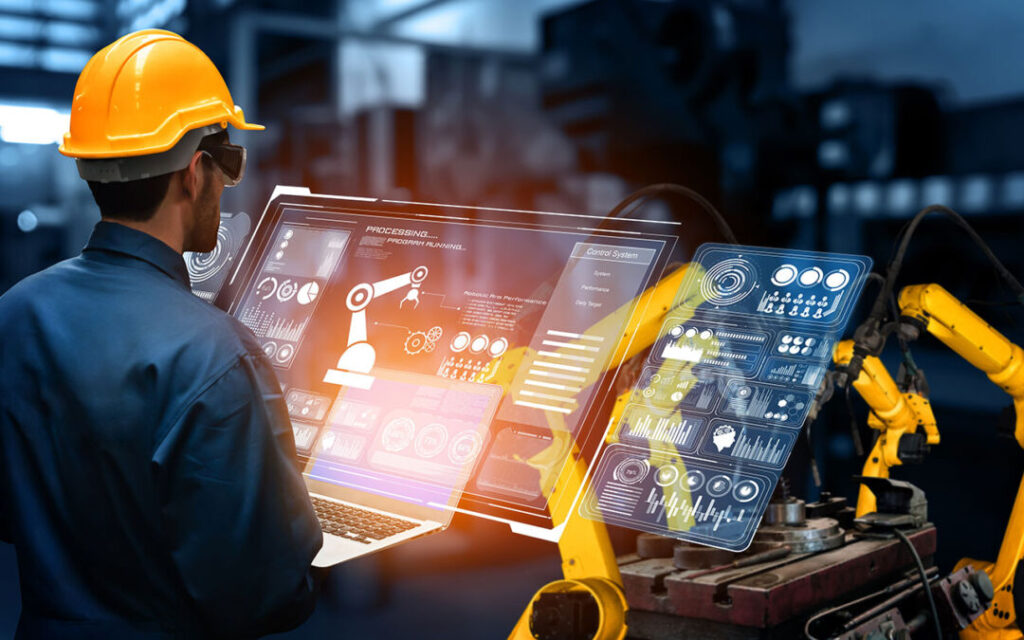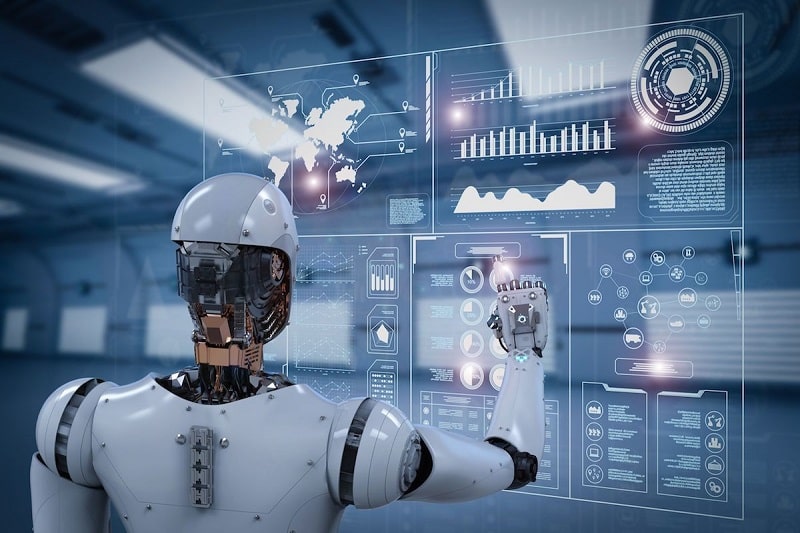In today’s fast-paced world, AI powered automation is revolutionizing industries across the globe, transforming how businesses operate and how employees engage with their tasks. As artificial intelligence (AI) technologies continue to evolve, automation is becoming an essential driver of increased productivity and improved efficiency in the workplace.
In this article, we will explore how AI-powered automation is shaping the future of work, enhancing productivity, and creating new opportunities for businesses and employees alike.
What is AI Powered Automation?
AI-powered automation refers to the integration of artificial intelligence technologies into systems and processes to automate tasks that traditionally require human intervention. Through AI algorithms, machine learning, and data analysis, automation systems can learn from data, adapt to changing environments, and make decisions without human input.
AI-powered automation encompasses several aspects, including:
- Robotic Process Automation (RPA): The use of software robots to automate repetitive tasks such as data entry, scheduling, and customer service interactions.
- Intelligent Automation (IA): Combining AI with RPA to handle more complex tasks, such as decision-making, problem-solving, and even customer support via chatbots.
The Impact of AI-Powered Automation on the Future of Work

As AI-powered automation continues to evolve, its influence on the workforce and the nature of work itself is becoming more evident. Here are some key ways in which AI is shaping the future of work:
1. Increased Productivity
AI-powered automation significantly enhances productivity by allowing employees to focus on higher-value tasks while automating routine, repetitive processes. Tasks like data entry, report generation, and scheduling, which once consumed considerable time, are now handled by AI systems.
- Example: AI-driven tools such as AI chatbots and virtual assistants are now able to manage customer inquiries, respond to frequently asked questions, and resolve issues without human involvement, freeing up human agents for more complex customer service interactions.
2. Cost Efficiency
By automating processes, businesses can significantly reduce operational costs. AI-powered automation can work 24/7 without the need for breaks, reducing the reliance on human labor for repetitive tasks and optimizing resource allocation.
- Example: Retailers use AI-powered automation to streamline inventory management, which reduces waste, minimizes stock-outs, and optimizes supply chain efficiency.
3. Enhanced Decision-Making
AI-powered systems can analyze vast amounts of data, identify trends, and provide actionable insights that can help organizations make better, data-driven decisions. This capability is transforming industries like finance, healthcare, and marketing.
- Example: AI in finance helps companies with predictive analytics for stock market trends, risk assessment, and fraud detection, providing real-time insights that enhance decision-making and mitigate potential risks.
4. Personalization and Customization
AI-driven automation allows businesses to offer personalized experiences to customers. From tailored recommendations to customized marketing strategies, AI helps brands connect with customers on a deeper level, leading to greater customer satisfaction and loyalty.
- Example: AI algorithms used by platforms like Amazon and Netflix analyze user behavior and preferences to offer personalized product recommendations or movie suggestions.
5. Empowerment of the Workforce
While automation is often viewed as a threat to jobs, AI-powered automation can actually empower employees by relieving them of mundane tasks. This allows workers to engage in more meaningful, creative, and strategic work, thereby fostering personal and professional growth.
- Example: Instead of spending hours sorting through data, marketing teams can focus on crafting creative campaigns and analyzing the results, knowing that AI tools handle the heavy lifting.
How AI-Powered Automation is Shaping Various Industries
AI-powered automation is not limited to one sector; it’s making an impact across multiple industries. Here’s how different sectors are utilizing AI to improve their processes:
1. Healthcare
In the healthcare industry, AI-powered automation is improving patient care by automating administrative tasks like scheduling, patient record management, and billing. Additionally, AI is assisting in diagnostics by analyzing medical imaging data to detect diseases early.
- Example: AI-driven diagnostic tools like those used for radiology and pathology can analyze images faster and with greater precision than human doctors, leading to more accurate diagnoses and timely interventions.
2. Manufacturing
In manufacturing, AI-powered automation is optimizing production lines, improving quality control, and enabling predictive maintenance. AI-driven robots are being used to assemble products, package goods, and perform inspections, reducing human error and increasing speed.
- Example: In the automotive industry, AI-powered robots are used for assembly and testing, increasing manufacturing efficiency and ensuring high product quality.
3. Retail
Retailers are using AI to automate inventory management, supply chain logistics, and customer service. AI can predict demand trends, ensuring that retailers keep the right stock levels while minimizing waste and reducing costs.
- Example: AI chatbots are increasingly handling customer queries on websites, while predictive analytics helps businesses restock products based on customer preferences and seasonal demand.
4. Finance
AI-powered automation in the finance industry is helping companies with fraud detection, risk management, and customer service. AI algorithms can quickly analyze financial data to identify anomalies and predict potential market fluctuations.
- Example: Banks use AI-powered tools to process loan applications faster, detect fraudulent transactions, and offer personalized financial advice.
The Challenges of AI-Powered Automation
While the potential benefits of AI-powered automation are vast, there are several challenges that organizations must consider:
1. Job Displacement
One of the primary concerns surrounding AI-powered automation is job displacement. As routine tasks are automated, some roles may become redundant, leading to job loss in certain sectors.
2. Data Privacy and Security
The use of AI in automation involves the collection and processing of vast amounts of data. This raises concerns about data privacy and cybersecurity, as businesses must ensure that sensitive information is protected.
3. Cost of Implementation
Implementing AI-powered automation solutions can require significant upfront investment in technology and infrastructure. Smaller businesses may face challenges in adopting these solutions.
The Future of AI-Powered Automation: What Lies Ahead?
The future of AI-powered automation is bright. As technology continues to advance, AI will become even more integrated into business operations, from intelligent robots handling manufacturing to AI assistants supporting customer service teams. The key to maximizing AI’s potential lies in a balanced approach—embracing automation while ensuring that employees are equipped with the skills needed to thrive in a more tech-driven world.
- Example: The future of AI-powered automation may involve autonomous vehicles handling deliveries, reducing transportation costs, and improving delivery efficiency.
Also Read: Machine Learning Vs. Artificial Intelligence: Understanding The Key Differences
Conclusion: Embracing AI-Powered Automation for a Productive Future
AI-powered automation is undeniably transforming the workplace, making it more efficient, productive, and innovative. By automating routine tasks, enhancing decision-making, and empowering employees, AI is paving the way for the future of work. As businesses continue to embrace AI technologies, they will unlock new levels of productivity, cost efficiency, and competitiveness in the global market.
To stay ahead of the curve, businesses must invest in AI-powered automation, foster a culture of continuous learning, and ensure that their workforce is prepared for the changes ahead. The future of work is here, and AI-powered automation is leading the way.
SEO Optimization Tips
- Keyword Placement: Use key terms such as “AI-powered automation,” “future of work,” “productivity,” “AI in business,” and “automation in industries” naturally throughout the content, particularly in the introduction, subheadings, and first 100 words.
- Meta Description: “Discover how AI-powered automation is revolutionizing productivity and shaping the future of work across industries, from healthcare to finance and beyond.”
- Internal & External Links: Link to related articles on AI, automation, or productivity, and use authoritative sources to back up the claims made in the article.
- Engagement: Encourage readers to comment on how they think AI will change their industries or invite them to share the article to increase social engagement.

